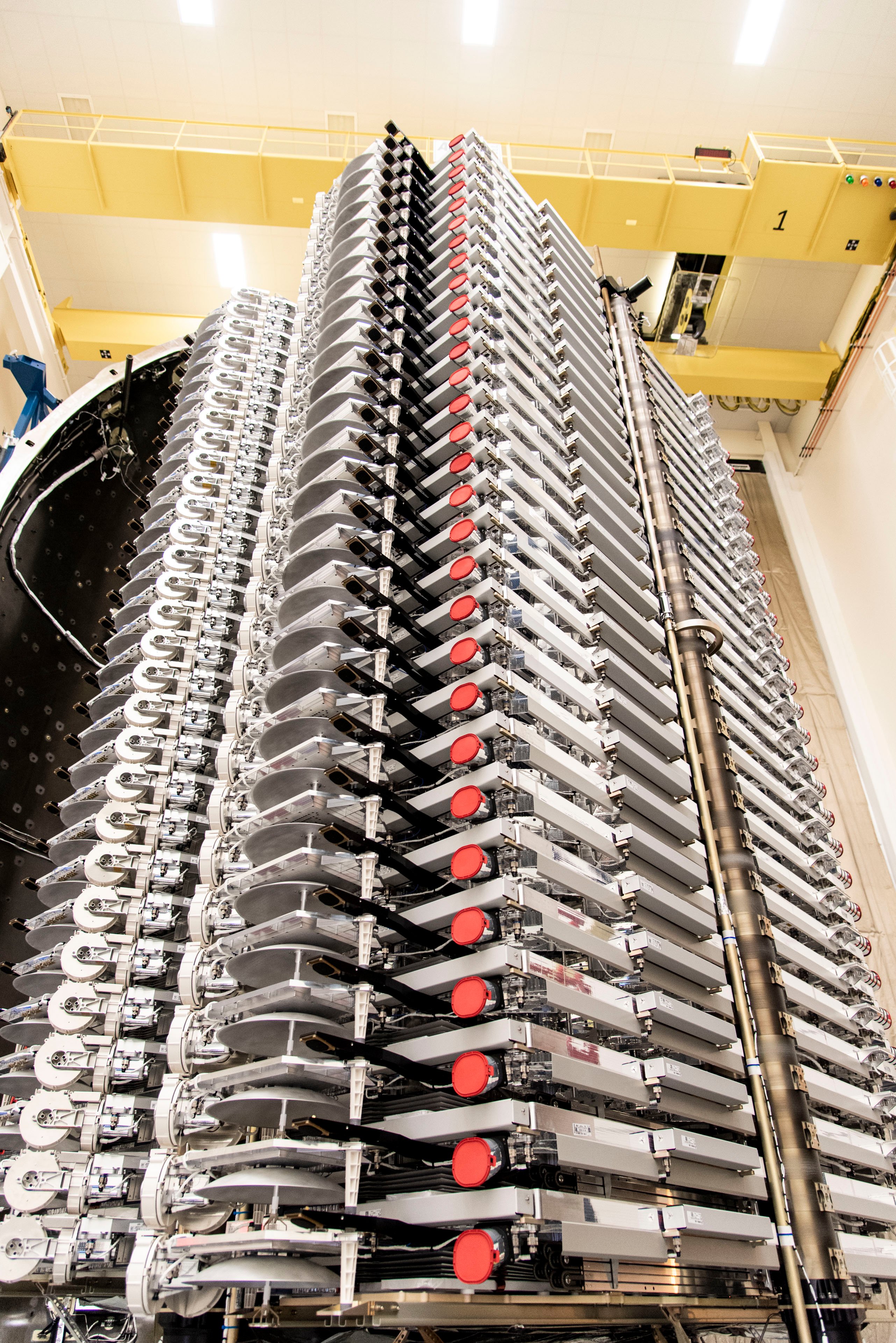
Forecasters predict near-ideal weather conditions Monday night for the first launch at Cape Canaveral this year, when SpaceX plans to send another 60 Starlink broadband satellites into orbit atop a Falcon 9 rocket.
The 60 small satellites will bring the total number of Starlink Internet relay stations launched by SpaceX to 180, giving Elon Musk’s space company the world’s largest largest fleet of commercial spacecraft.
The launch targeted for Monday, Jan. 6, has been delayed several days, first from Dec. 30 and then from Jan. 3. It will mark the first launch in a packed slate of missions from Cape Canaveral in 2020, which could see more than 30 launches by SpaceX and United Launch Alliance if schedules hold.
The Florida spaceport was the departure point for 16 orbital launches in 2019, plus an atmospheric test flight of NASA’s Orion crew capsule to demonstrate the ship’s launch abort system.
Liftoff of SpaceX’s 229-foot-tall (70-meter) Falcon 9 rocket is set for 9:19 p.m. EST Monday (0219 GMT Tuesday) from Cape Canaveral’s Complex 40 launch pad.
The mission will mark the 78th flight of a Falcon 9 rocket since 2010, and the 81st flight of SpaceX’s Falcon 9 family, which includes three launches by the triple-core Falcon Heavy vehicle.
A pre-launch test-firing of the Falcon 9 rocket is scheduled this weekend at Cape Canaveral.
The weather team at Cape Canaveral Air Force Station predicts a greater than 90 percent chance of acceptable conditions for launch Monday night.
“Strong and gusty northwest winds behind a frontal passage on Saturday will bring cool and dry weather through the weekend and into early next week,” meteorologists from the 45th Weather Squadron wrote in a forecast issued Thursday. “Strong high pressure will build across the southeastern U.S. on Sunday, (and) is forecast to be centered across Florida by Monday night. This will bring dry conditions and light northerly flow for the primary launch window.”
The only slight weather concern in the forecast Monday night is with the cumulus cloud rule.
Forecasters expect mostly clear skies, good visibility and northerly winds of 5 to 10 mph at launch time Monday night. The temperature should be around 57 degrees Fahrenheit.
If the launch is delayed to Tuesday night, the liftoff time will move around 20 minutes earlier. There is an 80 percent chance of favorable weather Tuesday night, with slightly higher odds of cloudiness that could breach the cumulus cloud rule.

The launch Monday will kick off a brisk pace of launches by SpaceX planned for 2020.
Gwynne Shotwell, SpaceX’s president and chief operating officer, said last month the company could perform as many as 35 to 38 launches this year from three launch pads in Florida and California. That figure does not include potential test flights of SpaceX’s next-generation Starship vehicle.
The bulk of SpaceX’s missions in 2020 will add satellites to the company’s Starlink constellation of broadband satellites.
SpaceX plans to operate the initial block of 1,584 Starlink satellites in orbits 341 miles (550 kilometers) above Earth. The company has regulatory approval from the Federal Communications Commission to eventually field a fleet of up to 12,000 small Starlink broadband stations, and has hinted in additional regulatory filings that it could seek to operate up to 42,000 Starlink spacecraft.
In response to concerns from astronomers, Shotwell said one of the 60 satellites set for launch Monday will test a new less-reflective coating designed to reduce the brightness of the spacecraft. The first 120 satellites were brighter than expected, raising worries from scientists that thousands oof Starlink craft could interfere with astronomical observations.
The company says it hopes to begin regional broadband service with the partially-complete Starlink constellation by the middle of this year, once it has launched 12 Starlink missions. Starlink service for Internet consumers worldwide will come after 24 launches, according to Shotwell.
SpaceX has not announced pricing for the Starlink service.
“All I know is you will be far happier with the value of the Starlink service than you are with your current service,” Shotwell said in December. “You will, for sure, get way more bandwidth for the same price, or way more bandwidth for less … You’ll be far happier with this. The value will be far greater (than with current Internet service providers).”
She said SpaceX is building about seven Starlink satellites per day at a factory in Redmond, Washington. Low-volume production of SpaceX’s ground user terminals is also underway in California, Shotwell said.
SpaceX is still working out its strategy for commencing Starlink commercial services.
“Between now and June … we’re going to have to figure that out,” Shotwell said. “We will do presales like Tesla has done. The initial experience will be bumpy. We’ll have early customers be part of that journey with us. We’re not going to fib and say it’s going to be the best thing ever. When you get service, it’s going to be great. But it will be bumpy for a while.
The U.S. military has a contract with SpaceX to demonstrate the Starlink network’s ability to deliver data to the cockpit of airplanes, the first of what SpaceX hopes will be a lucrative business selling bandwidth to the Defense Department.
“I think we probably will mature as a provider, and it should not be bumpy, really in ’21. By ’21, I think we probably will have figured out most of the problems.”
Email the author.
Follow Stephen Clark on Twitter: @StephenClark1.



